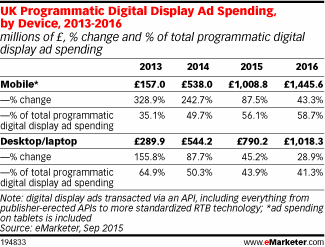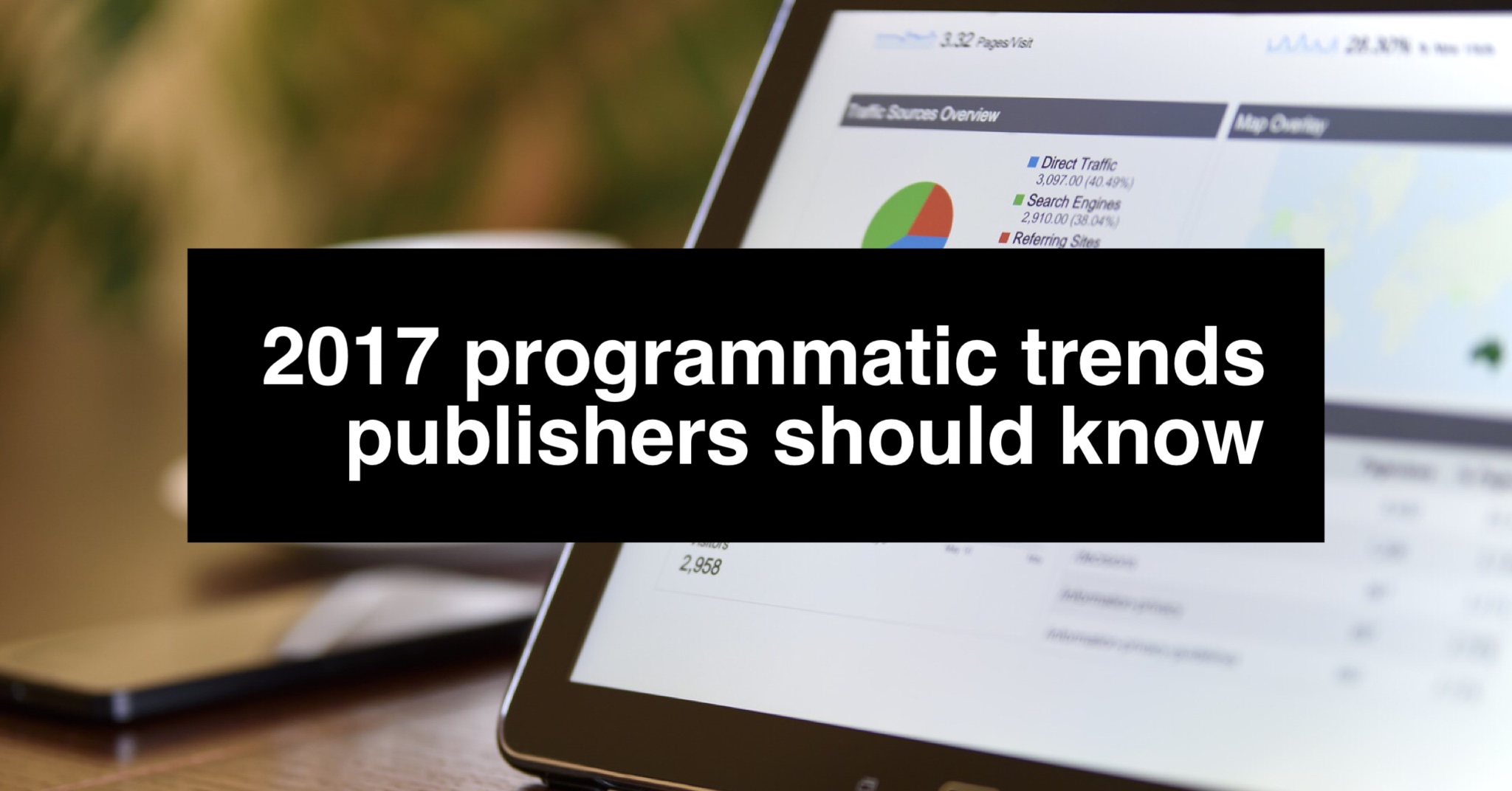2017 Programmatic Trends Publishers Should Know
2017 Programmatic Trends Publishers Should Know
Zev Newman is the Content Marketing Specialist at Imonomy, an In-Image platform. Zev manages Imonomy’s content strategy, social media marketing, and SEO. He loves the Detroit Lions, learning just about anything, and writing about the world of online publishing, marketing, and advertising. Connect with Zev at zev.newman@imonomy.com
In 2017, with the increased adoption of header bidding and RTB, programmatic will continue to be one of the biggest trends in the online industry. But, why programmatic? What’s all the fuss?
Higher CPMs. The Boston Consulting Group conducted a study that found that publishers that primarily serve ads programmatically see higher CPMs and increased revenues. In some cases, publishers built programmatic revenue to about 50 percent of their digital revenues while increasing direct sales and total CPMs.
Relevant ads. Programmatic technology enables digital publishers to reach consumers with real-time and relevant ads. In particular, by utilizing audience data, programmatic focuses on delivering the right ad for each specific user. When ads are relevant, users are far more likely to engage and less likely to download ad blockers.
The value of programmatic has become clear in recent years, but let’s get to what’s new this coming year.
2017 Programmatic Trends
2017 is going to be a big year for programmatic. According to eMarketer, UK programmatic ad spending will reach £2.5 Billion by the end of 2016, an uplift of 37% from 2015. And in 2017, programmatic is expected to grow at a similar rate, particularly as a result of mobile programmatic.

Source: eMarketer
Mobile programmatic. Mobile has been abuzz for a number of years now, but 2017 will likely be the year mobile programmatic comes of age. According to Econsultancy, smartphones made up 71% of all mobile programmatic transactions in Q1, up from 59% in Q4.
Mobile programmatic is catching on because advertisers are realizing that mobile is the best way to reach consumers. Brian Murphy, Senior Director of Publisher Relations at Yahoo, explains that it’s not only a new medium, but a more engaging medium: “Mobile (programmatic) is a new way of reaching users in a more engaging way. 24 hours a day, 7 days a week.”

Source: eMarketer
Programmatic ads on visual content. Inc recently reported that “posts that include images produce 650% higher engagement than text-only posts”, so “an estimated 84% of communications will be visual by 2018.”
These statistics say it all:

Source: Mainstreehost via Business2Community
According to this infographic, “65% of senior marketing executives believe that visual assets (photos, videos, illustrations and infographics) are core to how their brand story is communicated.” Marketing Land says it best, “visual content continues to be queen.”
As a result of the increasing dominance of visual content online, programmatic ads on images and videos will continue to trend in 2017. In particular, programmatic native ads such as In-Image and content recommendation will grow in popularity in 2017.
The need for ad quality. According to ZenithOptimedia, programmatic advertising is expected to grow faster than all other digital mediums in 2017, becoming the primary ad serving method for display. Yet, publishers and advertisers are still concerned about ad quality and brand safety. The fix? An increased investment in technology that scans ads for low-quality content and employing a team to perform quality assurance.
Madeleine Kennedy from AppNexus discussed the importance of ad quality in an online video put out by the company: “It’s important for publishers to maintain control over the advertising creatives that serve on their inventory, they need to protect their readers and reputation. Many technologies on the market today, don’t catch issues until after the fact.” The answer Kennedy explains is building a team to audit ads, real-time detection technology to detect malware, and the ability for publishers’ to set up their specific ad preferences.
With the increasing importance of ad quality, it’s worthwhile to watch the entire video. Don’t worry, it’s short:
Omni-channel programmatic. It’s on the rise because advertisers and publishers are recognizing that consumers are reading content on a variety of channels. To put it simply, programmatic is heading where the users are and reaching them in new and dynamic ways.
Chris Copeland, President of Yieldbot, recently explained this trend at Advertising Week 2016 in New York: “Connecting with people is what programmatic does today, helping buyers find what they are after and connect. What we’re not doing yet is experiencing a proficiency in all of these channels that can connect the dots in a strong and meaningful way.” I believe that 2017 will be the year programmatic connects the dots and offers personalized ads on the major channels.
Advertising Week 2016 held an insightful panel about omni-channel programmatic that is well worth watching:
Marketing success requires an omni-channel approach, an approach that allows marketers to reach new and returning users in fresh ways. Advertisers want omni-channel and they’re willing to pay for it.
To adapt to this trend, digital publishers must build sites and utilize technologies that make it easier for advertisers to reach users on desktop, mobile, tablet, or whatever platform consumers are using. They must build a brand that always thinks with an omni-channel approach, designing a unique digital strategy for every channel. The publishers that adapt quickly enough will be in the right position to see the revenue gains.
Further, the omni-channel trend means that behavioral data based on cookies alone won’t be enough going forward. Tracking mobile fingerprints, in-app clicks, and other relevant data points will be essential in 2017. Developing the proper data tracking and analysis to meet this need will be a challenge both advertisers and publishers must tackle in 2017.
Will you adapt to 2017’s trends? For publishers to succeed in the coming year, their digital strategies must adapt to the newest programmatic trends. The three trends I’ve written about are only the tip of the iceberg for what to expect from programmatic in 2017, but they offer a solid starting point. How will your organization adapt?
